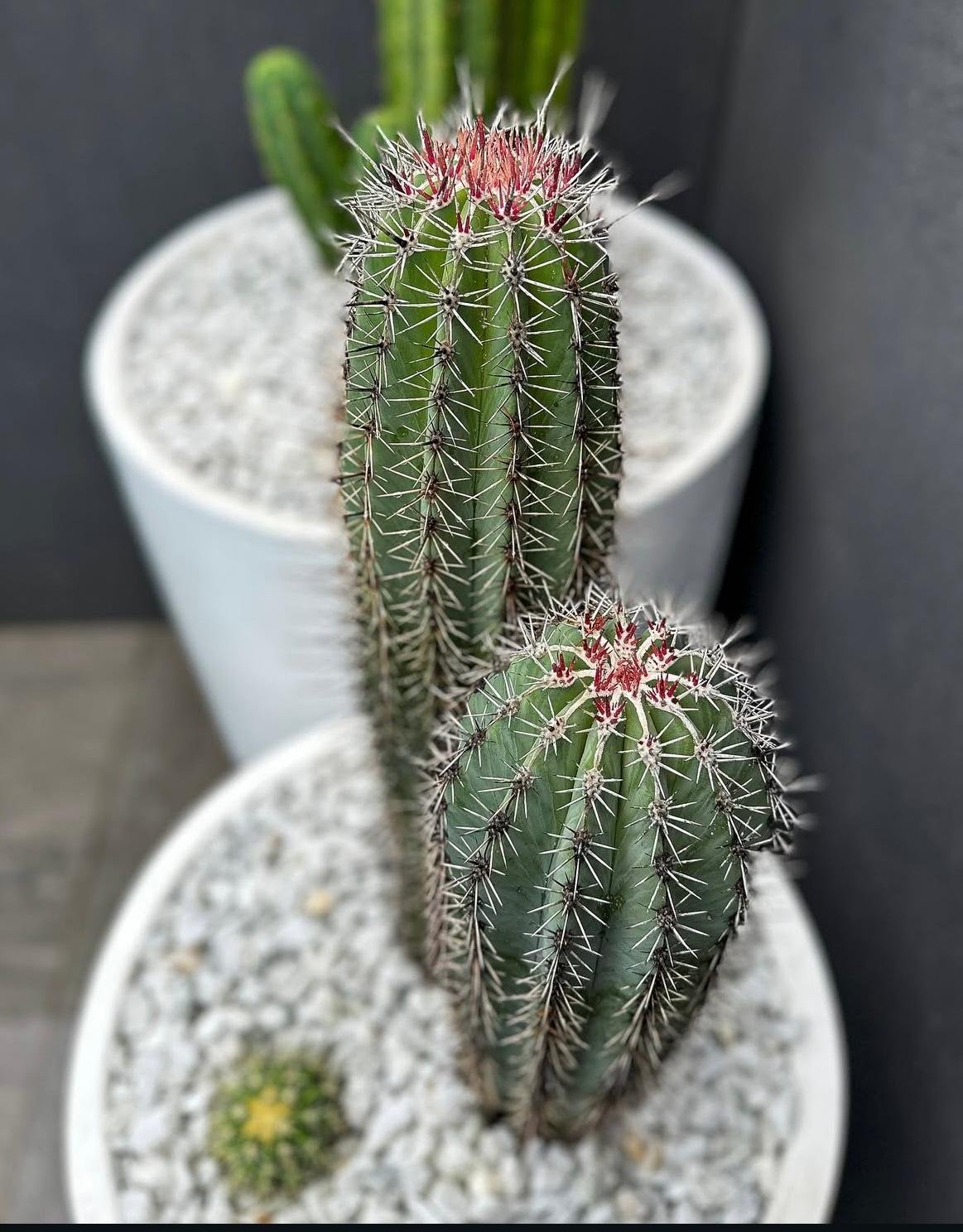Pachycereus Pringlei
BOTANICAL NAME
Pachycereus pringlei
ORIGIN
North America (USA and Mexico)
WATER
Water when soil is almost dry from spring to early autumn, seldom in winter (I’m cool to be caught in the rain if I have good drainage)
OUTDOORS
Full-day sun, bring it on! I’d also do great in ‘partial sun’
INDOORS
Yes, well-lit areas
FROST TOLERANT
Moderate tolerance (younger plants need protection from temperatures under 0 degrees celsius)
GROWTH RATE
Slow, growing 5-10cm per annum, up to 12m tall over a century
POPULARITY
Rare
FLOWERS
Once Mature, annual flowers in spring
PETS & CHILDREN
Positioned with caution, away from foot traffic. Medium risk to pets and children.
NOTE
The most affordable and efficient way to measure ‘is it time to water your cactus’ is by using a moisture meter. When the meter reads “DRY” it’s time to water again. Remember, over-watering cacti is the leading cause of death.
CONCACTUS FOR ALL INQUIRIES REGARDING PLANTS “SOLD OUT” ONLINE
Our products come in plastic pots, but fear not!
Get in touch post-purchase and we'll pot-ify your cactus for maximum appeal
The Pachycereus Pringlei, also known as the Elephant Cactus or the Cardon cactus, is a large, columnar cactus that is native to Mexico. It can grow up to 20 meters tall and is known for its impressive size and unique branching structure.
One of the main reasons the Pachycereus Pringlei is popular for landscaping is its ability to tolerate a wide range of growing conditions. It is drought-tolerant and can handle high temperatures, making it a great option for dry, desert landscapes. Additionally, it is also cold-hardy, making it suitable for gardens in colder climates.
Another advantage of the Pachycereus Pringlei is its ability to thrive in poor soil conditions. It has a deep taproot, which allows it to access water and nutrients that other plants cannot. This makes it a great option for landscapes where soil quality is poor or rocky.
The Pachycereus Pringlei is also a great option for privacy screens or windbreaks. Its large size and unique branching structure make it an effective barrier to block unwanted views or gusts of wind.































